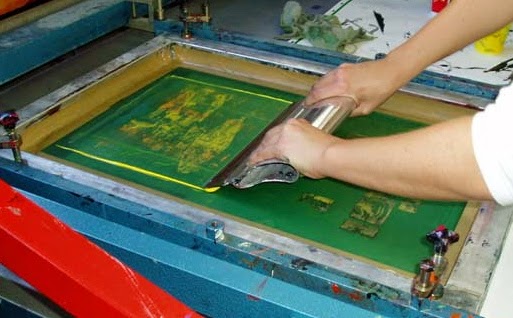200
Woodblock printing
Originated in China, woodblock printing was a technique that uses ink on blocks of wood to print images, texts or patterns which were engraved into them.
rbanks. (2009). Creating, cutting and printing your own woodblock.Available: http://www.instructables.com/id/Creating-cutting-and-printing-your-own-woodblock/?&sort=ACTIVE&limit=40&offset=40#DISCUSS. Last accessed 1st May 2014.
1040
Moveable type
Uses individual letters or punctuation to create a document, is a system of priting and typography.
Tina. (2013). Moveable type. Available: http://likeordinarylife.com/post/59764096061/movable-type. Last accessed 1st May 2014.
1500
Etching
A metal (copper, zinc or steel) plate is covered with wax and then engraved using a scratching technique by the artists where lines are wanted to appear, the metal is then dipped in acid to remove anything unwanted on the metal, it is then covered in ink and put through a high pressure press.
No Author. (2012). Etching Guide and Tutorial : Introduction. Available: http://www.wretchedetcher.com/etching-tutorial/etching-tutorial.html. Last accessed 1st May 2014.
1642Mezzotint
Tonally roughing the plate with thousands of tiny dots made by a metal tool (a rook) with small teeth.
In printing the tiny pit holds the ink when the plate is being whipped clean.
Nancy Farmer. (2011). A first attempt at mezzotint…. Available: https://nancyfarmer.wordpress.com/2011/12/08/a-first-attempt-at-mezzotint/. Last accessed 1st May 2014.
1768
Aqatint
Acid is applied to make marks in a metal plate, powdered rosin is added to create a tonal effect.The tonal variation is controlled by the level of acid exposed over large areas.
Belinda Del Pesco. (2012). Silk Aquatint: The Captain's Cabin. Available: http://belindadelpesco.blogspot.co.uk/2012/01/silk-aquatint-captains-cabin.html. Last accessed 1st May 2014.
1796
Lithography
A stone or a metal plate that is a completely smooth surface covered in wax or oil and etched into then printed on to paper.
Andreas Praefcke. (2007). File:Lithography stone Princeton motif.jpg.Available: http://commons.wikimedia.org/wiki/File:Lithography_stone_Princeton_motif.jpg. Last accessed 1st May 2014.
1837
Chromolithograph
An image is applied to stone or zinc with a crayon, it is then gummed with gum arabic then dipped into weak acid then dunked into oil base ink then run through a priting press to create the image, this process is mainly used for multi-colour prints.
No Author. (2006). Chromolithography. Available: http://www.johngrossmancollection.com/id13.html. Last accessed 1st May 2014.
1843
Rotary press
Prints images from a curved round cylinder on to paper.
No Author. (2004). Custom Rotary Press. Available: http://www.sdmdiecuttingequipment.com/baseexchange.htm. Last accessed 1st May 2014.
19th Century
Hectograph
Transferring of an original prepared with special inks to a pan of getatint then pulled tight onto a metal frame.
No Author. (2014). Hectograph. Available: http://en.wikipedia.org/wiki/Hectograph. Last accessed 1st May 2014.
1907
Screenpriting
A woven mesh/silk screen is used to support an ink blocking stencil, ink is applied to the top of the screen where the stencil is, then a squeegee is used to spread the ink all over the silk screen.
No Author. (2011). iW (No. 1) t-shirt screen printing. Available: http://www.ideasworkshops.com/idea-workshop-1-t-shirt-screen-printing/. Last accessed 1st May 2014.
Websites:
No Author. (2014). Printmaking. Available: http://en.wikipedia.org/wiki/Printmaking. Last accessed 1st May 2014.










No comments:
Post a Comment